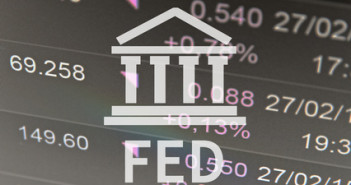Last week may have been a pivotal juncture for financial markets; however, it is yet to be seen whether the pessimistic forces that gripped markets to begin 2016 have run their course, or if the downward pressure on high-yielding assets are only taking a pause for half-time. The loonie has been one of the main benefactors that has taken advantage from the return of positive risk appetite, and accompanied by the Bank of Canada choosing to leave rates on hold, the waterfowl managed to recoup the majority of the previous week’s losses as both global equities and oil rallied into the end of the week. To us the rebound in the loonie appears to be a factor of an overstretched move higher in USDCAD, combined with a resumption in risk appetite, as opposed to a fundamental shift in the domestic outlook for the Canadian economy. It is clear that Governor Poloz had gone into the meeting with a bias to institute an additional rate cut, yet if one were to speculate, he most likely felt that additional one-way volatility to the downside in the loonie would be of little benefit to businesses and consumers within Canada. That being said, the decision to leave rates unchanged in our eyes was less about being bullish on business investment and consumer confidence, and more about passing some of the burden onto the Federal Government and keeping some dry powder for monetary policy should the bottoming process in oil continue to drag on. As such, GDP growth forecasts for 2016 were substantially downgraded from 2.0% to 1.4%, and the output gap that the BoC had originally forecast to close in mid-2017 has now been pushed back to late-2017. While Poloz has definitely bought the loonie some time for oil prices to stabilize and the Federal Government to re-up the fiscal stimulus plans, we are less sanguine that oil’s ramp on Friday is the sign a bottom has been carved out for Texas Tea, and that the bottoming process will still take time to crystalize. The loonie has achieved a pivotal retracement target from the fall that started early January, and is currently standing at a significant cross-roads for price action in the coming weeks. Should the loonie head higher to begin the week, momentum could take the northern peso on another rally of 2-3%, yet if oil subsequently sees selling pressure re-emerge, USDCAD may begin to trend higher as the loonie shorts re-load their position.
Also a significant event last week was the relatively surprising commentary from European Central Bank president Mario Draghi, and while there was no change to policy at the ECB monetary policy meeting, Draghi did hint that additional action could be delivered as early as March, the next meeting for the ECB. Market participants had been expecting little in the way of ground-breaking commentary heading into last week’s rate decision, so Draghi tipping his hat that further monetary policy stimulus may be required in order to combat the recent downside risks that have materialized in the common-currency zone took markets by surprise, shaking the euro out of its somewhat comfortable slumber to begin 2016. The prospect of additional monetary policy stimulus from one of the major central banks that appeared to have been close to exhausting its scope helped global equities catch a bid tone, assisting assets correlated with risk appetite find their footing. While there is a risk that Draghi is not in the majority on the board when it comes to his dovish concerns, we still think the euro will likely begin a process of ebbing lower over the next month leading up to the meeting. EURUSD had been sitting at the top-end of the downward sloping trend channel that has been in place since the middle of 2015, so we’re likely to see the common-currency move lower against the greenback if the incoming data exhibits lacklustre performance and speculation builds further monetary stimulus is on the horizon.
Looking ahead to this week we will get the Federal Reserve rate decision, although it is unlikely we’ll see any change in regards to policy, and instead it will be the statement that gets most of the attention from market participants. Given the Fed’s previous communication surrounding the gradual normalization of policy, and the dot plots that have indicated the boards’ forecast suggesting four interest rate hikes over the course of 2016, market participants do not expect this week’s meeting to be ‘live’ in terms of a chance to see rates move higher. At the same time, the start of 2016 is reminiscent of last summer when equity gyrations in China caused the Federal Reserve to postpone interest rate liftoff given the precarious situation in global financial markets, and subsequently, market participants have been heavily discounting the FOMC’s forecasted four interest rate hikes in 2016 to be somewhat ambitious. In conjunction with the early year sell-off in global equities, fourth quarter GDP forecasts continue to trend lower, with the Atlanta Fed model now projecting growth of only 0.7% on an annualized basis, with GDP growth facing headwinds from a strong dollar and weak global demand. While we are in the camp that forecast the FOMC’s interest rate trajectory to be flatter than what those on the board are anticipating, we do acknowledge the pendulum might have swung too far into dovish spectrum of rate expectations, and that stabilization in global equity markets will have rate hike expectations for March begin to perk up. The language contained within the Fed’s rate statementon Wednesday will be a focal point for market participants, with commentary on the strength of the global economy and its influences domestically key at providing investors clues to whether a March hike is a possibility and if the Fed’s dot plots remain intact.
Further reading:Get the most predictable currency pairs list
BOJ Likely On Hold This Week But…



